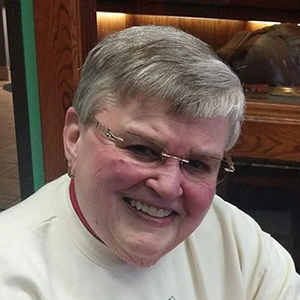When Jean Rommes was first diagnosed with COPD, she admits she had an inkling that something had been wrong for a while but, like many patients, she was in denial. She had worked for a health organization for years so, after doing some research on her own, she finally decided it was time to talk to her doctor in 2000. “Going upstairs had become very difficult and I noticed that I had shortness of breath much more frequently than my peers,” she said.
Though she lived in a small Iowan town, her primary doctor had a respiratory therapist on staff who could perform a spirometry test to confirm her diagnosis. “As odd as it sounds about 50% of the people who've been diagnosed with COPD have never had a spirometry test, which is the only test that can give a definitive COPD diagnosis. I was lucky to have a doctor who thought it was an important test to get,” she explained.
Once she was diagnosed however, Jean admits that she felt discouraged and did very little to help her symptoms. Moving was hard, so she didn’t. That was until she landed in the hospital with respiratory failure. “Being in the hospital, lying in the bed connected to oxygen 24/7 was scary. So, I asked the doctor what I needed to do to get better and he suggested that I lose some weight. I decided that when I got out of there, I was going to do everything I could to do just that.”
With the help of supplemental oxygen, Jean began to work out regularly at home. Her determination helped her maintain a healthier diet and allowed her to push herself to burn from 350 to 700 calories daily walking on the treadmill. “Over 18 months I lost well over 100 pounds and by that time I had an exercise habit that wouldn’t quit,” Jean laughed. Since then, Jean has been able to keep her COPD symptoms relatively under control.
A Dual Diagnosis
Many chronic lung disease patients are at risk for a dual diagnosis because there has been permanent damage to the lungs. One such condition that is common for patients with COPD but is under-diagnosed is bronchiectasis. Patients who suffer from bronchiectasis have bronchi that have become irreversibly thickened and damaged, so they are no longer able to as effectively drain mucus and other secretions. When germs become trapped, this creates a vicious cycle of inflammation and infection that eventually forms irregular airway pockets, leading to further loss of lung function over time.
Jean had no idea that this might be a problem for her until a CT scan, taken during a COPD gene study she was participating in, had some irregular findings. “I realized that the bronchiectasis must have been really active in 2000, when I was having the hardest time breathing, and my coughing was so awful. But they put me on antibiotics and steroids when I was in the hospital, which I think helped with those symptoms.” Luckily for Jean, her bronchiectasis has been asymptomatic since that time. But healthcare providers continue to acknowledge and monitor her bronchiectasis during each check-up scan she has.
Maintaining Her Health Now
Jean is a big advocate for staying healthy through exercise and diet, something that she has seen first-hand can make a huge difference for patients with chronic lung disease. “Exercise is the number one thing because if you don’t exercise you are going to lose lung function, and unfortunately for those with COPD or bronchiectasis, that loss will be exaggerated,” Jean explains.
She also is a strong advocate for working with your pulmonologist to make sure that you are taking the right meds and are up to date on all the latest research. “Your primary care provider may not know about specific medications or about whether or not pulmonary rehab is right for you. In my case, my pulmonologist works with my primary care provider to make sure that I am healthy and getting the best care,” she said.
Learn more about COPD and bronchiectasis on our website.
Blog last updated: October 24, 2025



